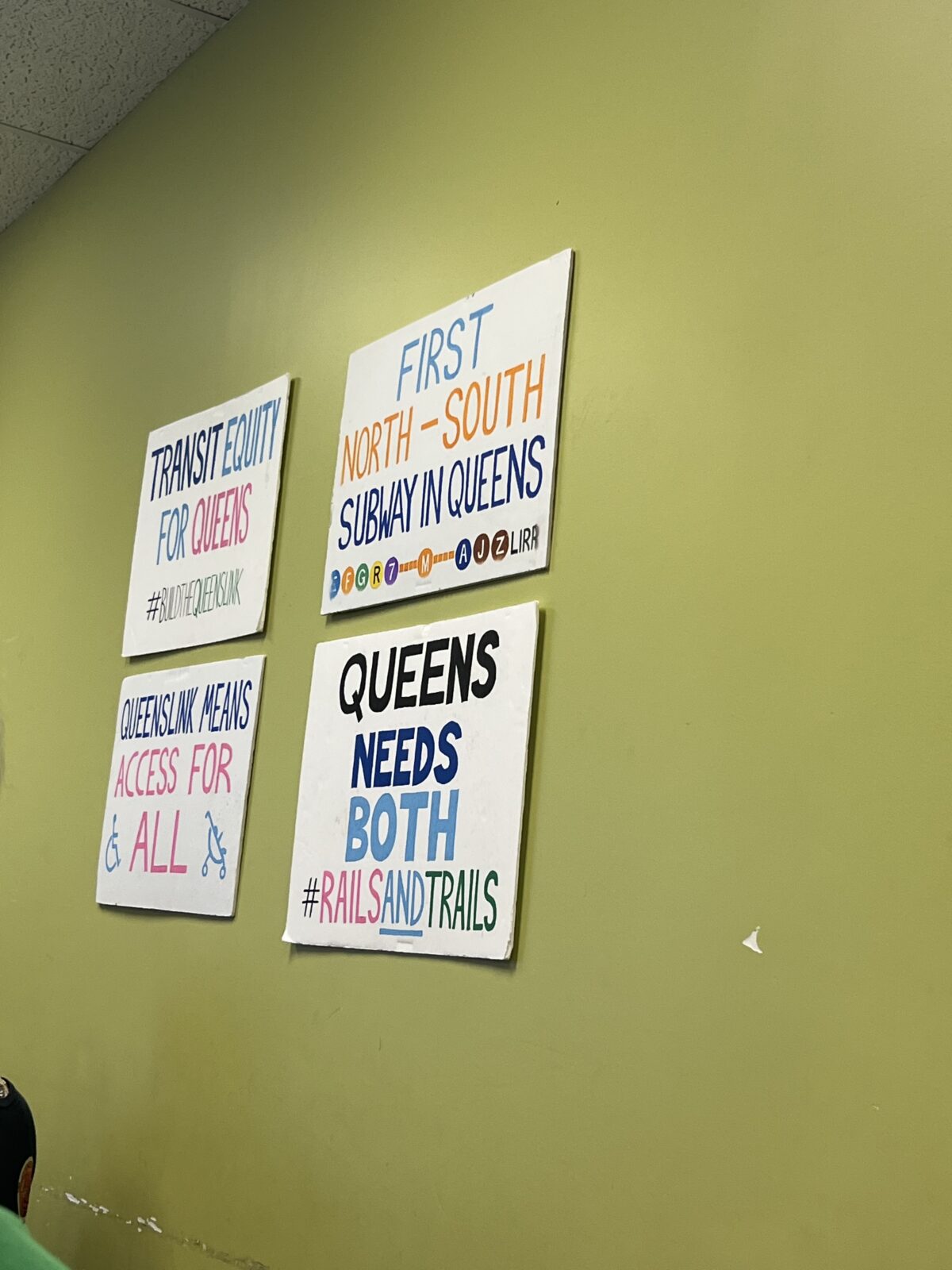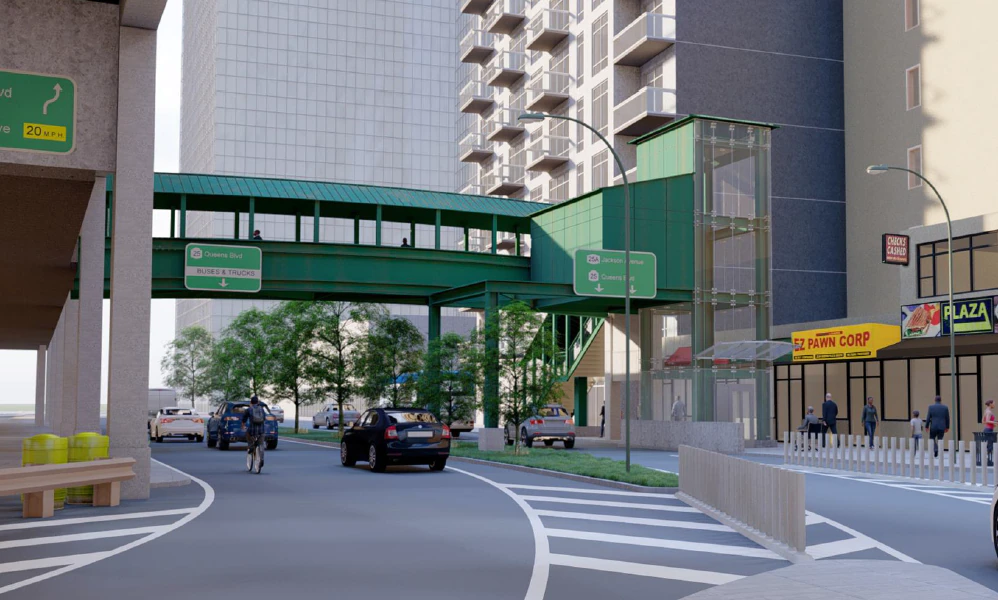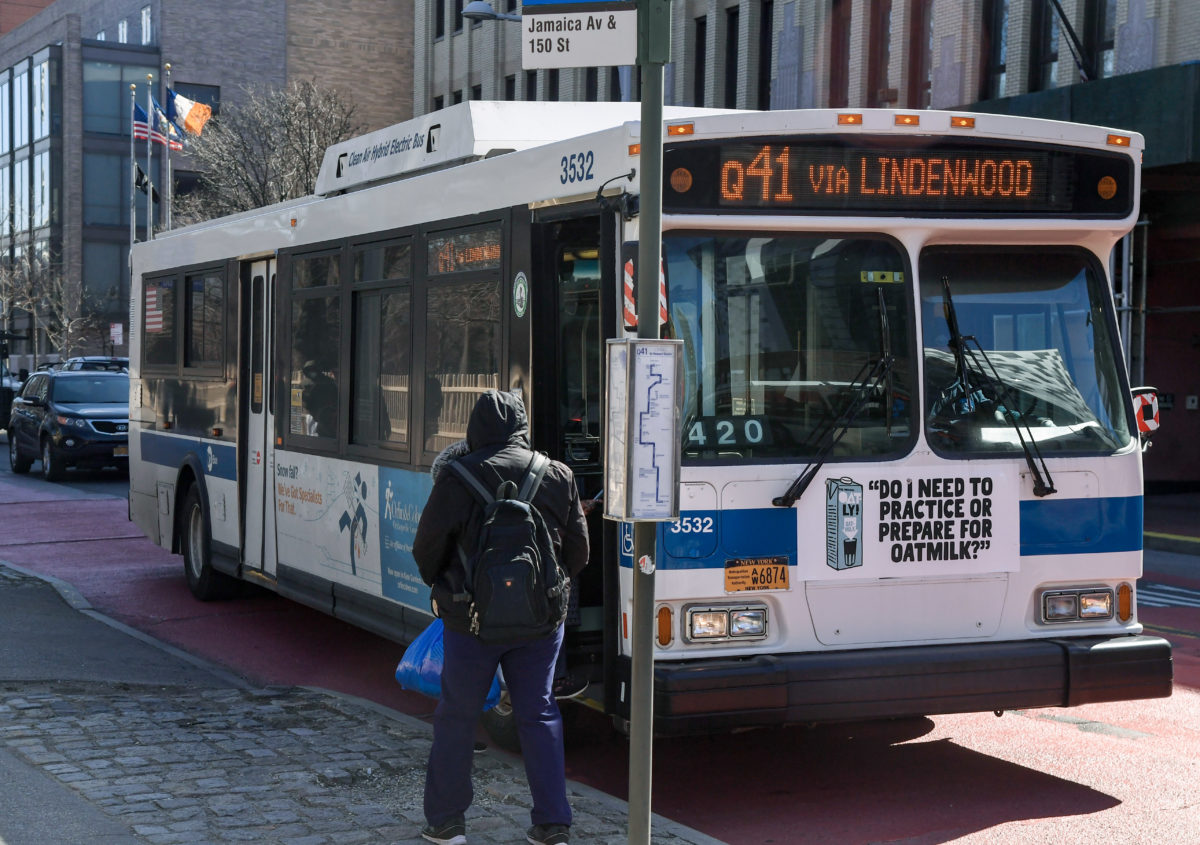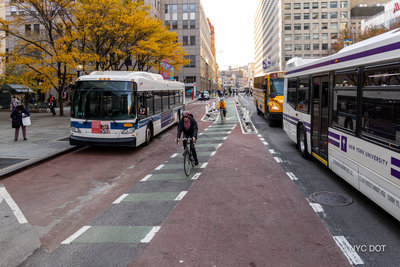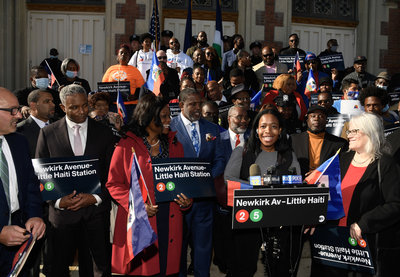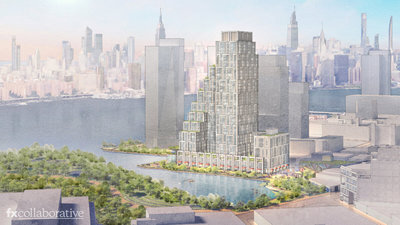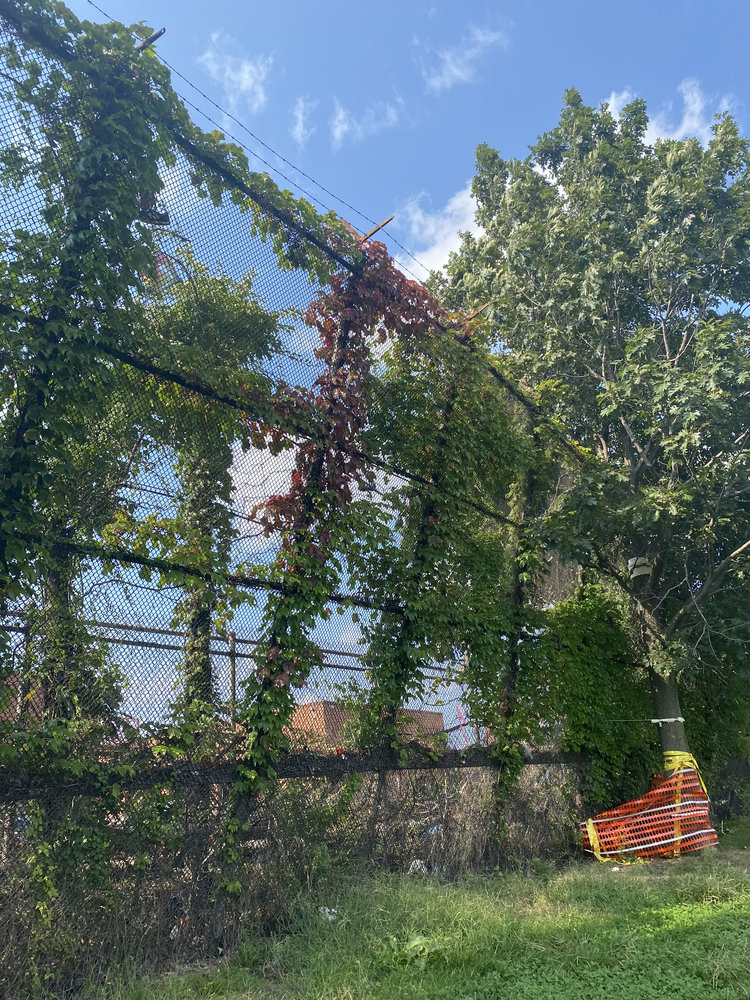Rego Park Town Hall Held on QueensLink After Negative Report from MTA
By Celia Bernhardt
cbernhardt@queensledger.com
QueensLink held a community town hall in Rego Park’s Queens Library on Thursday, Oct. 12, with a presentation detailing their transit proposal and ample time for discussion and questions from attendees. In the wake of the MTA’s negative assessment of their proposal, presenters continued arguing for its importance.
The QueensLink plan calls to reactivate the abandoned Rockaway Beach Branch rail and use it to connect North and South Queens via the M train. Advocates emphasize that Southeastern Queens is a transit desert saddled with long commutes into the city, as well as difficulty accessing other parts of Queens. In the MTA’s recently released 20-year needs assessment, QueensLink was given a relatively low rating compared to other capital project proposals.
Lead by QueensLink’s chief design strategist Andrew Lynch, the event drew a crowd of around two dozen. Audience members had no shortage of questions about the nitty gritty of the project and how it would be implemented.
Responding to an audience member’s question of how long the entire process, start-to-finish, would take, Lynch said that a full impact study would take up to two years, and construction could take up to ten.
One attendee expressed concern about how the planned route runs an above-ground train through his community’s parking lot.
“I live in Forest View Crescent,” he said. “If they run a train through there, we’re gonna lose a lot of parking space.”
Lynch explained that QueensLink was in the process of increasing communication with the housing complex, and would take their concerns into consideration. “We are going to be doing walking tours of that area with members of your building to get a better sense of it. And we are going to be doing events like this literally at your community room,” Lynch said.
“This is definitely an area…that we need more feedback on. And we didn’t understand these issues until the last event, but that’s why we’re reaching out to your building to get a better understanding of this,” Lynch said, before adding, “The big issue that was actually brought up to us was access for the fire department to come in the back of the building.”
Lynch also mentioned that Queenslink was considering incorporating multiple noise-reducing elements into the design of the rail’s above-ground portions, so that noise wouldn’t burden on residents living close to the train.
Among the attendees was Leroy Comrie, State Senator for senate district 14 in Southeastern Queens and chairman of the committee on corporations, authorities, and commissions, which oversees the MTA.
A QueensLink organizer asked Comrie if he would support allocating money in the state’s budget for an environmental impact study so that proponents of the plan “could really see if it’s possible.” Comrie affirmed that he was in support of such a use of funds.
“On the state level, we’re trying to get them to include it in the needs assessment as well so we can have a fair understanding of it,” Comrie said. “But when the MTA doesn’t want to do something, they just double down.”
Comrie also mentioned that it was important to address concerns like noise and parking.
“My concern was that, frankly, the folks in the Forest Hills area wouldn’t want to train rumbling through their backyards, because in some areas it’s less than five feet away from people’s backyard,” Comrie said. “That was my concern about it. So if you’ve met that challenge and can get past that, you know, that would make sense.”
Comrie spoke about what Queenslink was up against, and advised them moving forward that Councilmember Lynn Shulman would be a key person to get support from. “If you can get her on board, we could get a long way to getting there.”




